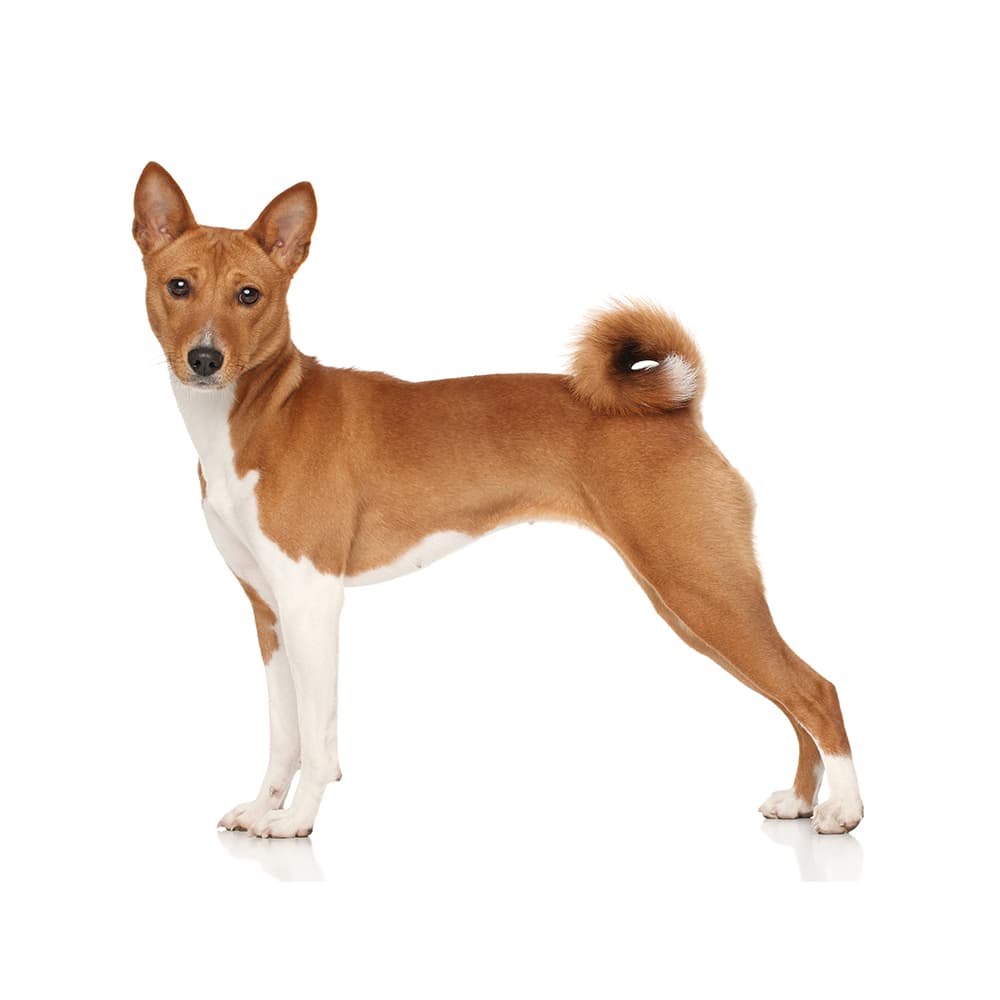Discover your dog's connection to this breed and 200+ others


Discover your dog's connection to this breed and 200+ others



The Basenji is a small to medium-sized dog breed that hails from Central Africa, known for its unique qualities, including a distinctive yodel-like sound, often referred to as a ""barroo,"" and a somewhat cat-like personality. The Basenji breed is an ancient one, believed to have origins in Central Africa, particularly in regions like the Congo Basin. The breed is famously associated with the ancient Egyptians who revered the Basenji-like dogs. In fact, tomb carvings and sculptures dating back to the Old Kingdom around 4,000 years ago depict dogs that strongly resemble the Basenji. These ancient dogs were cherished as gifts and were known for their hunting skills.
Basenjis are generally healthy dogs, but like all breeds, genetic screening is recommended. They may suffer from hypothyroidism, immunoproliferative small intestinal disease (IPSID), and hip dysplasia. Genetic testing for these and other conditions such as Fanconi syndrome, progressive retinal atrophy, pyruvate kinase deficiency, and spinocerebellar ataxia can assist veterinarians with diagnosis and proactive care, as well as help breeders identify affected and carrier dogs.
Basenjis are known for being intelligent, independent, and somewhat aloof. They can be reserved with strangers but tend to form strong bonds with their families. Due to their intelligence, they can be challenging to train and need consistent, positive reinforcement methods.
Despite their smaller size, they have high energy levels and need plenty of exercises. Without it, they may resort to destructive behaviors out of boredom. They also have a strong prey drive and may not be suitable for homes with small pets. While the Basenji can be a loving and loyal breed, they may not be the best choice for first-time dog owners due to their independent nature and need for consistent training.
A canine genetic lineage is a group of individuals or entire breeds that descended from common ancestors predating modern breed formation. Often these lineages are associated with a ‘type’ of dog with a unique historical working role and associated behaviors (e.g., herding, scent hunting, etc.).
Spitz and Sled Dogs originate in the Arctic and subarctic regions which caused them the develop adaptations to cold climates. Some of these adaptations give rise to characteristics of the lineage, most notably a dense double coat that helps with insulation. The lineage of these dogs can be followed back to ancient breeds developed by Indigenous people. These ancient breeds were used as an aid for transportation, herding, guarding, and hunting. These jobs have created dogs that are independent, intelligent and have strong work ethics as well as a sturdy body that helps them to pull sleds or go on long journeys over rough terrain.
Example breeds with ancestry from this lineage include Akita, Chow Chow, and Siberian Husky.
The Basenji is known as the "barkless dog", but they do make a yodeling sound called a "barroo" when they get excited. They do still make other typical dog sounds, including whining and growling.
This breed is also known for its cat-like personality.
In the late 19th and early 20th centuries, explorers noted the existence of these dogs and their unique characteristics. However, it wasn't until the 1930s that the breed was successfully brought to England and later to America, where it was formally recognized by the American Kennel Club (AKC) in 1943.
https://www.akc.org/dog-breeds/basenji/
https://www.pawprintgenetics.com/products/breeds/129/
https://www.petmd.com/dog/breeds/c_dg_basenji
Recommended by top vets with decades of experience
21 breeds
64 genetic health markers
50 genetic trait markers
